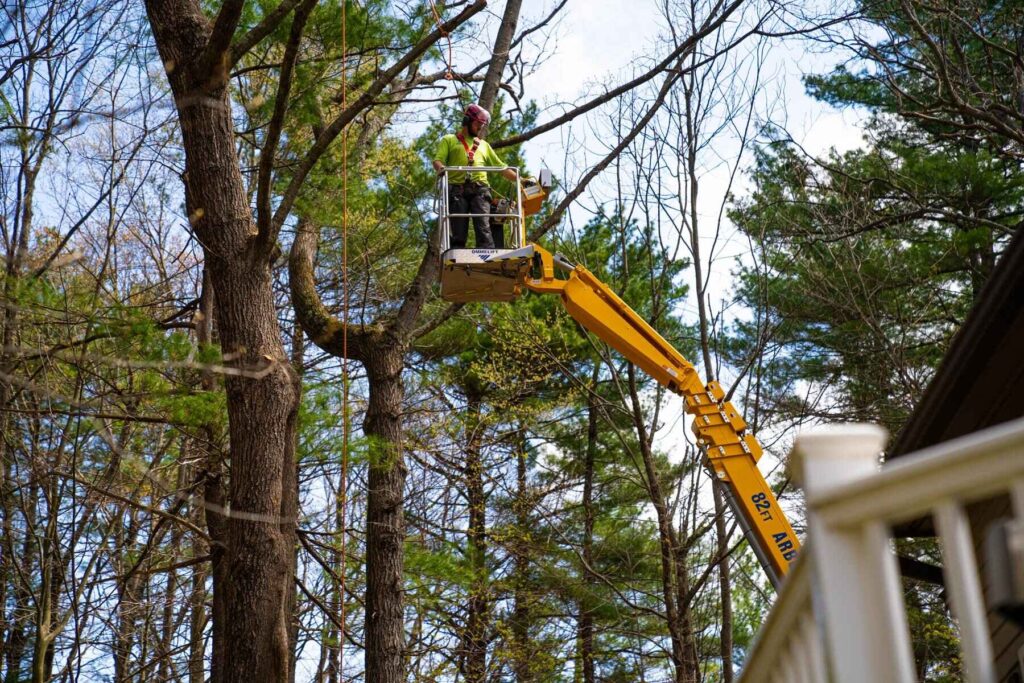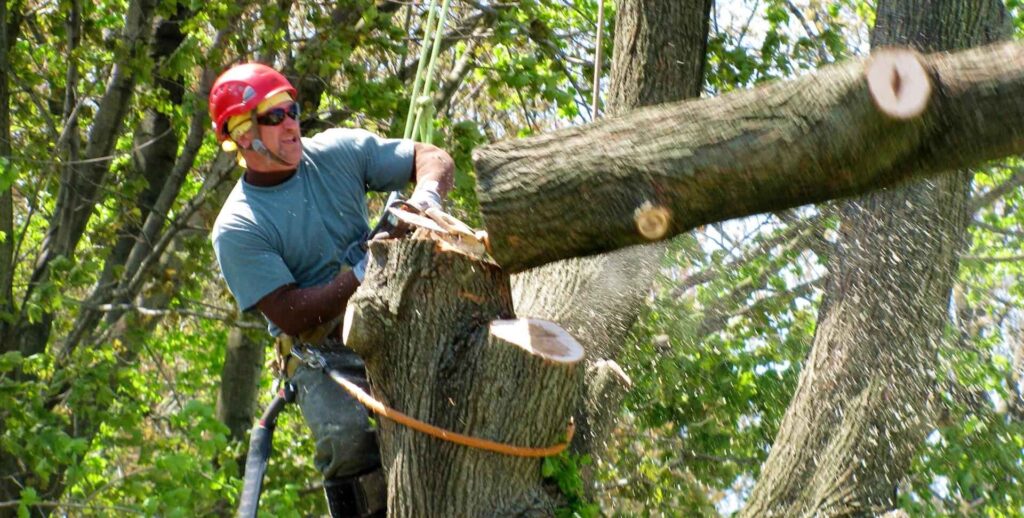Trees are more than just part of the landscape — they’re living, growing organisms that contribute to the environment, boost curb appeal, and even increase property value. But like anything that grows, they need regular maintenance. One of the most important — and often misunderstood — methods of tree maintenance is tree lopping.
In this guide, we’ll explain what tree lopping actually means, why it’s important for your trees and property, the benefits of hiring professionals, and the potential dangers of doing it wrong. Whether you’re a homeowner with an overgrown gum tree or just curious about proper tree care, this article will walk you through everything you need to know.
What Is Tree Lopping?
Tree lopping involves the cutting back of branches and limbs to control a tree’s shape, size, or overall appearance. It’s not just random chopping — when done correctly, it’s a strategic process focused on safety, aesthetics, and tree health.
Tree lopping typically includes:
- Removing large, unwanted branches
- Cutting back diseased or damaged limbs
- Controlling a tree’s height or spread
- Shaping the tree for symmetry or visual appeal
It differs from pruning, which is more selective and targets smaller parts of the tree for health reasons. Lopping is generally more aggressive and often used when a tree has grown too large for its location or poses a risk to people or property.
Why Tree Lopping Is Important for Tree Health
While some people see lopping as just a way to “trim the top,” it’s actually vital for maintaining healthy growth. Trees, like people, benefit from a little routine care. Here’s how:
1. Disease Management
Branches affected by fungus, rot, or insect infestation can spread illness to the entire tree. Lopping removes the infected parts early, giving the tree a better chance at recovery.
Seee more: How Waverton Florists Create Beautiful Floral Statements
2. Promotes New Growth
Strategically cutting back limbs encourages the tree to redirect nutrients and energy to stronger parts. This often results in more vigorous and healthier regrowth.
3. Reduces Stress on Weak Limbs
Over time, large branches can become heavy and put stress on the tree’s structure. Lopping helps redistribute weight and reduce the chances of snapping during storms.
4. Improves Airflow and Sunlight
Thinning out dense canopies through lopping allows more air and light to reach the tree’s interior and the ground below. This is crucial for both tree health and surrounding plant life.
Tree Lopping for Safety and Property Maintenance
Apart from health benefits, tree lopping plays a critical role in making your property safer and easier to maintain.
1. Prevents Property Damage
A large branch crashing down on a roof or fence can cause thousands in damage. If a tree is near power lines or hanging over your home, proactive lopping can prevent serious hazards.
Real-world example:
During a windy season, a homeowner in a suburban area had a massive tree limb fall on their garage. It had been visibly cracking for weeks, but wasn’t removed in time. Regular tree lopping could’ve prevented that costly accident.

2. Keeps Outdoor Areas Usable
Trees can grow out of control, blocking driveways, walkways, or crowding other garden elements. Lopping ensures trees stay in their lane — quite literally.
3. Enhances Visibility and Safety
Overhanging branches can block street views, security cameras, or outdoor lighting. Lopping clears those blind spots and adds to the safety of your home’s exterior.
The Benefits of Hiring Professional Tree Loppers
While it might be tempting to grab a chainsaw and do it yourself, tree lopping isn’t a typical DIY job. Done incorrectly, it can harm the tree, damage your property, or even put you in physical danger.
Here’s why hiring a pro is worth it:
1. Knowledge of Tree Biology
Professionals understand how different trees respond to cuts and how to shape them without causing stress. Not all trees can be lopped the same way.
2. Proper Equipment
Tree lopping often involves working at heights, using chainsaws, or accessing tight spaces. Experts have the right gear to do it safely and efficiently.
3. Insurance and Liability Protection
Licensed tree loppers are usually insured. If something goes wrong during the job, you’re protected — unlike when doing it yourself.
4. Clean, Safe Results
A pro won’t just lop and leave. They’ll clean up debris, check for disease, and ensure your tree looks natural — not hacked or unbalanced.
Risks of Improper Tree Lopping
Tree lopping done poorly can have long-term consequences. Here’s what can go wrong:
1. Tree Shock or Death
Cutting too much at once can shock the tree. Removing too many leaves or limbs can limit the tree’s ability to photosynthesize, leading to decline or death.
2. Weak Regrowth
Improper cuts can lead to fast but weak regrowth, making the tree more prone to breaking or disease in the future.
3. Ugly Appearance
Lopsided, awkward trees are not only unattractive but may lower your property value.
4. Legal Trouble
In some areas, lopping trees without proper permits (especially native or protected species) can result in hefty fines. A professional knows local regulations and can help you stay compliant.
When Should You Consider Tree Lopping?
Not sure if your tree needs lopping? Watch for these signs:
- Branches are getting too close to your roof or power lines
- You notice cracks, dead limbs, or signs of disease
- Your tree is blocking sunlight to other plants
- The canopy is too dense, restricting airflow
- You’re preparing for storm season and want to minimize risk
As a general rule, late winter or early spring is a good time for tree lopping — before new growth begins. However, timing can depend on the tree species and local climate.
Tree Lopping vs. Pruning: What’s the Difference?
Let’s clear up a common confusion.
- Tree Lopping: More aggressive. Used for reshaping or removing large sections of a tree. Often done for safety or space control.
- Tree Pruning: More precise and gentle. Targets dead, diseased, or small branches to promote health and aesthetics.
Both are useful but serve different purposes. In many cases, a professional will suggest a combination of the two.
Conclusion: A Healthier Tree Starts with Smart Choices
Tree lopping isn’t just about trimming branches — it’s about protecting your property, maintaining tree health, and preserving the beauty of your outdoor space. Done right, it leads to strong, safe, and long-living trees. Done wrong, it can cost you more than just your weekend.
If you’re in your 30s and focused on responsible homeownership and outdoor maintenance, don’t overlook your trees. Investing in strategic, professional tree lopping is one of the smartest moves you can make for your garden’s health and your home’s safety.
Take Action: What You Can Do Today
- Walk around your yard and inspect trees for overgrowth or dead limbs
- Schedule a consultation with a local arborist if you’re unsure
- Start budgeting annually for tree maintenance, just like you would for HVAC or gutters
- Avoid the DIY urge — your trees will thank you
Caring for trees is part of caring for your home. Keep them strong, safe, and stunning — with proper tree lopping at the right time.

